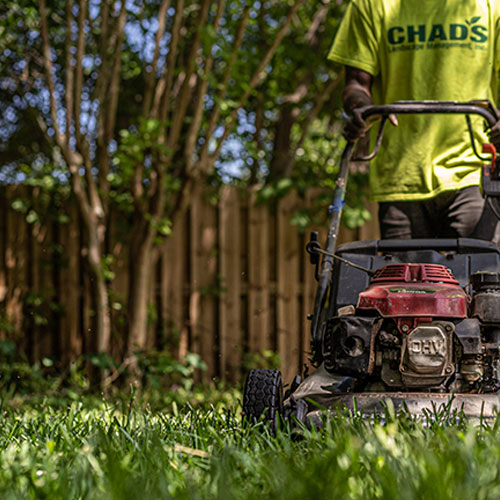
How Pre-Emergents Can Help You Win at Spring Weed Control
March 10, 2021
7 Questions To Ask Before Choosing A Landscape Maintenance Company
March 22, 2021For many homeowners and property managers, spring is synonymous with yardwork. You may be tempted to tackle your first spring cut as soon as the weather warms, but mowing too soon can be a costly mistake. It’s best to step back and evaluate your lawn condition before cranking up your mower.
Unfortunately, knowing when to start mowing your lawn in the spring isn’t as easy as waiting for the grass to grow. Several factors can determine your best mowing scheduling, from where you live to your type of grass to what your seasonal goals are.
To help you get the most out of your spring mow, here are some things to consider when determining when to start mowing in spring.
Your Location
Where you live has a big impact on when – and how – to start your spring season lawn schedule. You never want to start your spring mowing if there’s still the possibility of a late winter freeze.
Ideally, you should wait until temperatures are consistently over 40 degrees. This will give your lawn time to fully thaw and lowers the risk of a future frost. If you live in a more northern area, that could mean waiting until mid-late April. For those in more southern areas like ours, this usually happens by mid-March.
Your Grass Height
While new spring sprouts can be unsightly, you should wait until your grass is at least two to three inches tall before your first spring mow. This will give your lawn the chance to recover from the strain of the winter season and help you avoid injuring your grass by cutting it too short. Allowing your lawn to fill out will also give you better insight into any problem patches that need attention.
You never want to cut more than one-third of the blade height at a time, as this can shock your grass and make it vulnerable to pests and disease. For your first mow, wait for the grass to be adequately tall and set your mower blade to its highest setting. You’ll need to mow your lawn every five days during the spring, so plan accordingly – don’t schedule your first mow right before a 2-week long vacation.
Wait Until It’s dry
April showers bring May flowers – and make it hard to stick to your spring lawn schedule. While you may have found the perfect day to mow your lawn, a recent rain means it’s probably best to wait. Mowing when it’s wet clumps your grass, leaves unsightly ruts in your lawn, and puts real strain on your mower. You’re better off delaying your first mow by a few days than creating a soggy spring look.
Before You Mow
Believe it or not, mowing shouldn’t be the first step on your spring lawn schedule. If you haven’t yet, there are a few initial steps you should take before making a move with the mower:
- Rake your lawn. Before your first mow, rake your lawn to remove any fallen leaves, twigs, stones, thatch, and other debris that have accumulated over the winter.
- Tune-Up your mower. Complete your mower’s spring tune-up before taking it for a spring spin. At minimum, clean and sharpen the blades to ensure a smooth first cut.
- Fertilize. If you plan to apply spring fertilizer to your lawn – and you should – you’ll want to give your grass plenty of time to absorb the nutrients before mowing.
There’s no specific date that’s best for your first spring mow. By evaluating your lawn condition and applying best mowing practices, you can help ensure your lawn gets the most out of every maintenance mow, not just the first one.
If you still aren’t sure if it’s time to start mowing your lawn, Chad’s Landscape Management can help! We offer tailored maintenance programs that handle every aspect of your seasonal lawn care, from mowing to edging to nutrients and beyond. Contact us today!





